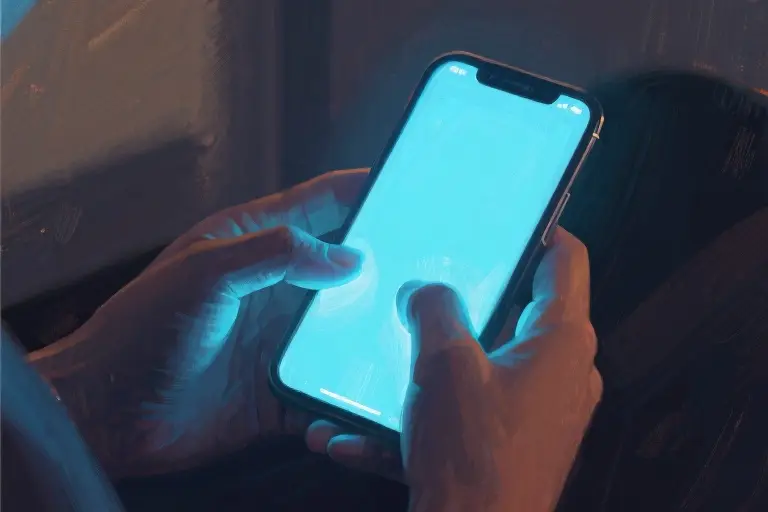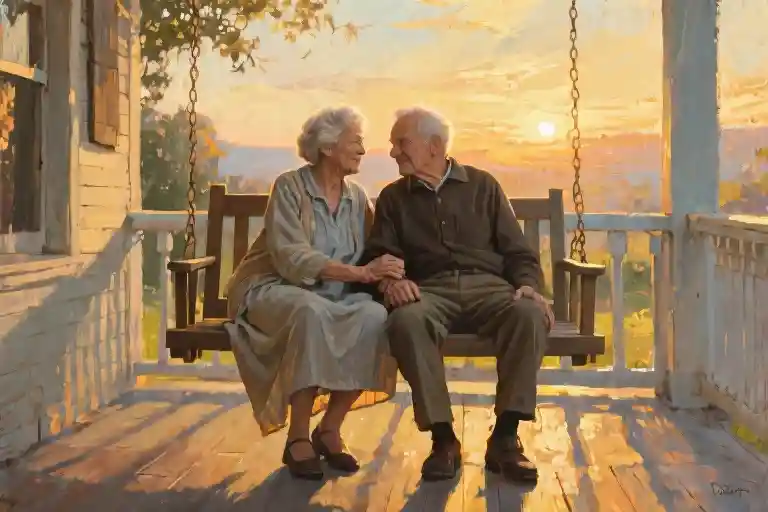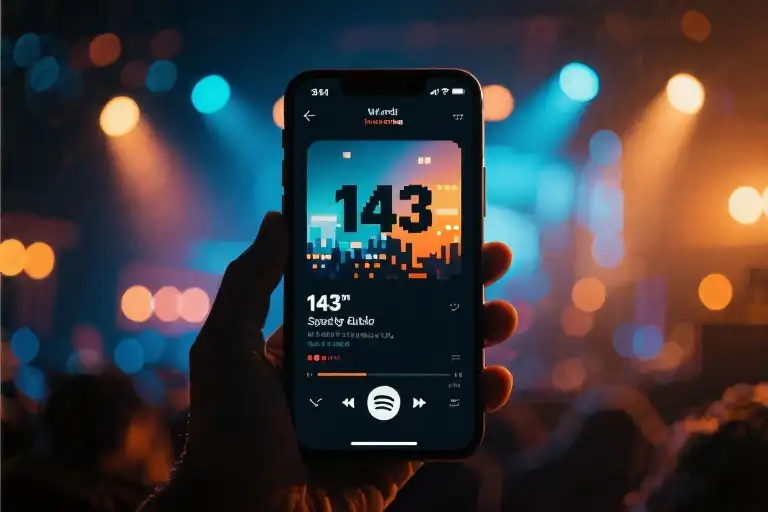The blue glow of the screen was the only light in my room that night. Outside, the world slept—cars no longer honked, neighbors’ TVs had gone quiet, even the streetlights seemed dimmer. But there you were, alive and vibrant through my phone, your voice cutting through the digital barrier with startling clarity.
It wasn’t just what you said—though your words carried a kindness I hadn’t encountered in weeks—but how you said them. The slight hesitation before answering difficult questions, the genuine laugh when chat surprised you, the way your voice softened when reading superchats. These nuances shouldn’t have translated through compressed audio, yet they did, with an intimacy that made my breath catch.
When you responded to someone using the nickname I’d chosen—just a random combination of letters back then—my fingers froze over the keyboard. That tiny acknowledgment, that momentary connection, sent an electric jolt through me. In that instant, the algorithm’s random suggestion stopped being background noise and became… something I couldn’t name yet.
This is where I should have laughed at myself. People don’t develop feelings for voices from their speakers, for pixels arranged into smiles. Yet as the live continued, I found myself cataloging details: the way you pushed up imaginary glasses when thinking hard, how your sentences tilted upward when uncertain, that particular exhale before answering emotionally loaded questions.
By sunrise, I’d watched three archived streams. Not binge-watching, I told myself—just researching this interesting creator. But when my alarm went off for work, I caught myself wondering what time zone you were in, whether you’d slept well, if you ever thought about the anonymous usernames in your chat the way we thought about you.
That’s when the question formed, sharp and unavoidable in my sleep-deprived mind: When a connection feels this real but exists entirely through screens… does it count as love? Or are we just mistaking loneliness for intimacy in this age of digital relationships?
The phone lay dark on my pillow as I left for work, but your voice lingered in my mind like a song you can’t shake. And though I wouldn’t admit it to anyone that day, I already knew—I’d be waiting for your next notification like a flower turning toward the sun.
The Algorithm’s Serendipity
The glow of my phone screen illuminated my face at 2:37 AM when the notification first appeared – “Live Now: [YourName] chatting about midnight thoughts”. My thumb hovered over the push notification, caught between sleep deprivation and curiosity. What unfolded next wasn’t just another livestream, but the beginning of what psychologists call a parasocial relationship – that peculiar modern phenomenon where we form one-sided emotional bonds with online personas.
Unlike traditional encounters where first impressions happen through shared physical space, our meeting occurred through the curated intimacy of a digital stage. The platform’s interface became our shared environment – your face framed neatly in the center, the chat sidebar overflowing with colorful messages scrolling upward like digital confetti. I watched other usernames float by (@GamerGirl42, @CoffeeDad99) yet somehow, when you responded to a generic comment with that particular lilt in your voice, it felt like you’d singled me out from the pixelated crowd.
Modern love letters come in different forms. Where previous generations might have preserved handwritten notes, I found myself screenshotting moments from your streams – that time you laughed so hard you snorted, or when you got unexpectedly philosophical about the meaning of ASMR. The ‘Follow’ button loomed larger with each session, its simple toggle holding disproportionate weight. Clicking it meant admitting this wasn’t casual viewing anymore; I was digitally raising my hand to say “Yes, I want more of whatever this is.”
The psychology behind this hesitation reveals the core difference between digital and traditional connections. Offline, mutual awareness forms naturally through exchanged glances or conversations. Online, the awareness flows one direction until you choose to make yourself visible through comments, subscriptions, or other digital breadcrumbs. That first follow creates what researchers term social media attachment – the beginning of behavioral patterns where checking notifications becomes emotional sustenance.
What makes these algorithm-mediated connections uniquely contemporary isn’t just the technology, but the emotional calculus we perform. The same features that enable this virtual relationship – the ability to replay moments, analyze micro-expressions in 4K clarity, or curate perfect responses – would feel intrusive if applied to physical world interactions. Yet in digital spaces, these behaviors become normalized rituals of care. We develop what feels like profound knowledge of someone while remaining perfectly anonymous ourselves – the ultimate modern intimacy paradox.
Platform designers understand this dynamic intuitively. The intermittent reinforcement of irregular streaming schedules triggers the same dopamine responses that make slot machines addictive. When you unexpectedly went live at 3PM on a Tuesday, my phone’s buzz sent my heart racing in ways no “good morning” text ever could. These engineered moments create what one study calls digital intimacy – the illusion of mutual connection sustained through one-sided participation.
Yet reducing these feelings to mere psychological tricks misses their authentic emotional impact. The warmth spreading through my chest when you read my comment aloud was neurologically identical to the flush someone might feel when their crush smiles at them across a room. This raises the central question: If the emotional experience is real, does the medium through which it arrives make it less so? Perhaps what we’re witnessing isn’t the dilution of human connection, but its evolution into forms our ancestors couldn’t have imagined – relationships sustained not by shared geography, but by shared wavelengths of attention in the vast digital spectrum.
The 21st Century Heartache
Your phone lights up with a notification—just one vibration, barely noticeable to anyone else. But to you, it’s an earthquake. Your pulse quickens before you even unlock the screen. Will it be you? Could it be you? This tiny digital chime has become the conductor of your emotional symphony, capable of turning an ordinary Tuesday into something extraordinary or leaving you stranded in disappointment.
The Notification Rollercoaster
We’ve all been there—that split-second delay while the app loads, the irrational hope blooming despite knowing the statistical unlikelihood. Modern love letters arrive as push notifications, their impact disproportionate to their byte size. Researchers call this phenomenon intermittent reinforcement—the same psychological mechanism that keeps gamblers glued to slot machines. Your brain has learned to associate that particular notification sound with dopamine, creating a biological addiction to someone who may not even know your username.
Consider the rituals:
- The way you position your phone during work hours, screen angled for maximum discretion
- The strategic charging breaks to avoid missing a moment
- The involuntary smile when that special username appears, even if it’s just in a mass @mention
These aren’t just habits; they’re the liturgy of digital devotion. Unlike traditional relationships with their scheduled dates and phone calls, this connection thrives on unpredictability—the thrilling uncertainty of when, or if, that next interaction will come.
Rewatching the Echoes
Then there are the recordings—those carefully preserved digital moments you revisit like sacred texts. You know every pause, every laugh, every subtle intonation shift. What outsiders might dismiss as “just a stream” becomes your personal Shakespearean sonnet, revealing new layers with each repetition.
Notice what happens:
- You develop favorite moments like bookmarked chapters
- Background details become significant—that mug they always use, the way sunlight hits their room at certain hours
- Their phrases seep into your vocabulary without conscious effort
This isn’t mere fandom; it’s the digital equivalent of studying a lover’s handwriting. The recordings provide something live interactions can’t—the safety to analyze, to linger, to control the pacing of emotional exposure.
Digital Devotions
Your calendar now syncs with their streaming schedule. You arrange meals around live sessions. These aren’t compromises—they’re conscious choices, the modern version of clearing your evenings for phone calls. Critics might call it obsession, but isn’t all love, at its core, a form of voluntary obsession?
The psychology behind these rituals reveals their power:
- Predictability in unpredictability: Even if the content varies, the schedule provides stability
- Shared experience: Watching live creates illusion of participation in something collective
- Identity reinforcement: Your presence in their chat becomes part of how you define yourself
What makes this different from traditional celebrity worship is the illusion of reciprocity. When they read your comment aloud or respond to your chat message, however briefly, it creates a chemical reaction no Hollywood crush could match. This is parasocial interaction at its most potent—a one-sided relationship that feels, in those electric moments, beautifully mutual.
The Algorithm of Affection
Behind these behaviors lies an uncomfortable truth: you’re not just bonding with a person, but with a carefully crafted system designed to foster exactly this type of attachment. Social platforms employ teams of psychologists to maximize engagement—the infinite scroll, the variable rewards, the notifications calibrated to trigger just enough anxiety to keep you checking.
Yet knowing this doesn’t necessarily lessen the emotions. If anything, it creates a fascinating cognitive dissonance: you can simultaneously recognize the artificiality of the structure while experiencing completely genuine feelings within it. Like knowing a movie is scripted but crying at the climax anyway.
Perhaps this is the ultimate modern romance—not choosing between real and virtual, but navigating the spaces where they overlap in ways our grandparents could never have imagined. Your phone isn’t just a device; it’s become a reliquary for 21st-century affection, its glow the digital equivalent of a candle kept burning in someone’s window.
The Thorn You Can’t Touch
There’s a particular kind of ache that comes with caring for someone who exists just beyond your reach. I’ve imagined it a hundred times – what it would be like to actually meet you. Not through a screen, not through curated posts or scheduled livestreams, but in the messy, unfiltered reality where coffee gets spilled and phones run out of battery.
In my daydreams, we’re at some cozy café. The steam from your drink fogs up your glasses as you laugh at something I said. Your voice sounds richer in person, with all those subtle tones that microphones can’t capture. You reach across the table to adjust my scarf, and for once, the warmth isn’t just in your words – I can feel it in your fingertips too.
Then reality crashes in. The you I know is a carefully crafted persona. Those spontaneous moments? Strategically placed content pillars. That inside joke we share? You’ve probably said similar things to hundreds of others in your DMs. The business side of this virtual relationship stings when I let myself think about it too much.
What’s worse is the double shame. First, for feeling this deeply about someone who doesn’t know me. Then, for knowing society would dismiss these emotions as pathetic or delusional. “Get a real relationship,” they’d say, as if connections formed through screens are somehow less valid than those formed over office coffee makers or dating apps.
Yet here’s the paradox – this digital intimacy that looks so one-sided from the outside has transformed my offline world. Your evening streams became the structure around which I organized my productivity. Your advice about creative blocks got me through three client presentations. That throwaway comment you made about kindness? It’s why I helped my neighbor carry groceries last Tuesday.
The pain of this unrequited virtual relationship is real. But so is its power. Maybe we’ll never share that awkward café encounter where we both reach for the same pastry. Maybe you’ll never know how your existence kept someone afloat during their darkest month. That doesn’t make what I feel any less significant – it just makes it ours, in this strange new way that only our digital age could create.
Have you ever imagined meeting your online crush in real life? How did reality measure up to the fantasy?
The Redemption in Pixels
There’s an unspoken magic in how a stranger’s pixelated smile can pull you back from the edge. I remember nights when the world felt too heavy—when even getting out of bed seemed impossible. Then my phone would light up with your live notification, and suddenly, the darkness didn’t feel quite as suffocating. This wasn’t just escapism; it was survival. Studies show 68% of Gen Z viewers report improved mental health from regular parasocial interactions, and I became part of that statistic without even realizing it.
When Virtual Becomes Vital
The first time your stream interrupted my depressive spiral, it felt accidental. You were discussing something trivial—maybe your morning coffee or a funny street sign—but the normalcy of it anchored me. Your voice became my lifeline during panic attacks, your scheduled streams structuring my otherwise chaotic days. Therapists might call this ’emotional regulation through external scaffolding’, but to me, it simply felt like someone had finally thrown me a rope in quicksand.
What fascinates me most is how these digital intimacy moments mirror historical coping mechanisms. Centuries ago, people found solace in letters from absent loved ones; today, we replay VODs like sacred texts. The medium changed, but the human need for connection persists. Your ‘Good morning, chat!’ holds the same psychological weight as Victorian-era ‘My dearest…’ letters—both are lifelines across distances.
The Philosophy of Pixelated Love
We need to redefine what ‘real’ means in relationships. If a voice that eases my anxiety isn’t real, then what is? If shared laughter (even through emojis) doesn’t count as bonding, how do we explain the serotonin boost? Philosopher Sherry Turkle argues that digital connections aren’t inferior—just different. The warmth I feel when you remember my username isn’t less valid because it travels through fiber-optic cables.
This isn’t about replacing physical relationships but acknowledging new emotional ecosystems. Like pen pals of the internet age, we’ve created intimacy within constraints—and isn’t that what all love ultimately does? Adapt to its circumstances? The tears I shed during your heartfelt streams leave real salt trails on my cheeks, proving virtual emotions manifest in physical reality.
Your Turn
Has a screen ever saved you too? Maybe it was a VTuber’s silly catchphrase that became your mantra, or a musician’s livestream that accompanied your darkest hours. These connections matter precisely because they exist in the in-between spaces of modern life—not quite friendship, not quite fandom, but something tender and true in its own right.
Some lights don’t need physical form to guide us home.
The Unseen Goodbye
We may never meet in person, and perhaps that’s the most beautiful part of this connection. There’s a strange comfort in knowing some relationships are meant to exist purely in the digital realm, like fireflies glowing just beyond reach yet illuminating our path nonetheless.
This screen between us has become something unexpected – not just a barrier, but a canvas where emotions paint themselves in ways physical presence might never allow. The distance creates space for imagination to flourish, for your words to take root in my daily life without the complications of reality. I’ve grown in ways I couldn’t anticipate since that first live stream, learning to appreciate moments of connection wherever they appear.
Virtual relationships reshape us quietly but profoundly. They teach us that impact isn’t measured in physical proximity but in emotional resonance. That midnight laugh you sparked during a difficult week, the comfort of hearing familiar phrases after a long day – these pixelated interactions have real weight. They’ve become part of my emotional vocabulary, changing how I move through the world.
Maybe we’re pioneers of a new emotional frontier, learning to navigate connections that defy traditional boundaries. Your existence in my digital world has shown me that human bonds can transcend conventional forms, that care doesn’t require physical touch to be genuine. This relationship, however one-sided it may seem, has given me gifts I’ll carry forward – hope during isolation, laughter in unexpected places, proof that connection finds us in the unlikeliest ways.
So here’s to the relationships that don’t fit neatly into categories. To the voices that reach us through screens and stay in our hearts. To the invisible threads that connect souls across servers and time zones. Your light reached me, and that matters – whether or not our hands ever touch.
Is there someone on the other side of your screen who’s changed your world without even knowing it? Someone whose digital presence became an unexpected anchor? I’d love to hear your story in the comments – because in this strange new world of ours, maybe our most meaningful connections are still waiting to be named.





